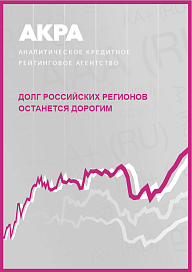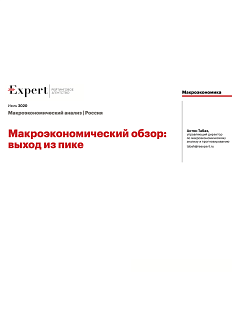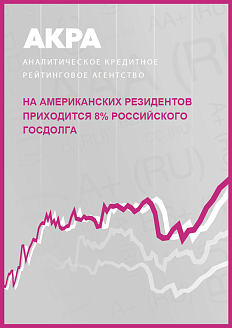Debt refinancing is the key trend in the Russian financial market. Although the key rate of the Central Bank of the Russian Federation is still higher than the pre-crisis level, long-term loan rates are already lower for the majority of borrowers. For instance, regional bonds yields at placement declined from 15%-16% in 2014-2015 to the weighted average of 8% as at the end of 2017. As of 01 December 2017, 24% (RUB 491 billion) of the direct debt of regional budgets and 5.3% (RUB 17 billion) of the direct debt of municipalities were accrued to the bonds. The total of 29 regions and 3 municipalities placed bonds in 2017, with the aggregate amount of placed bonds exceeding RUB 209 billion. In view of unavailable refinancing for expensive bond issues of previous years, losses of regional budgets would reach as much as RUB 30 billion in 2018-2023. Of that amount RUB 9.1 billion fall on 2018 (around 7%-9% of debt servicing expenses of the regional budgets in 2018) and RUB 7.5 billion on 2019. Further cuts of the key rate of the Central Bank of the Russian Federation will be the driver.
According to ACRA estimates, the key rate of the Central Bank of the Russian Federation will decrease in 2018 down to 77.25%.
.png)
Ten regions account for 70% of the total losses related to servicing expensive bonds. In particular, the Krasnoyarsk Krai would have the largest amounts to be overpaid: around RUB 3.7 billion in 2018-2023, of which RUB 1.4 billion fall on 2018. The Moscow and Nizhniy Novgorod Regions will overpay RUB 3.0 and 2.6 billion, respectively, for the above period, and the Orenburg Region to overpay around RUB 2.1 billion. Budgets of the Samara Region, Udmurtia and the Republic of Komi would lose around RUB 1.9 billion each.
.png)
Unavailability of refinancing for expensive bond issues of the previous years would put pressure on the credit quality of specific regions for four more years. Such regions have limited capabilities for debt maneuvering and reducing debt load level. Mostly these are regions with strong and moderate credit quality that were less focused on financial aid from the federal government in the crisis years of 2014-2015. This, in turn, helped the federal government to increase support of other regions that needed financing then.






